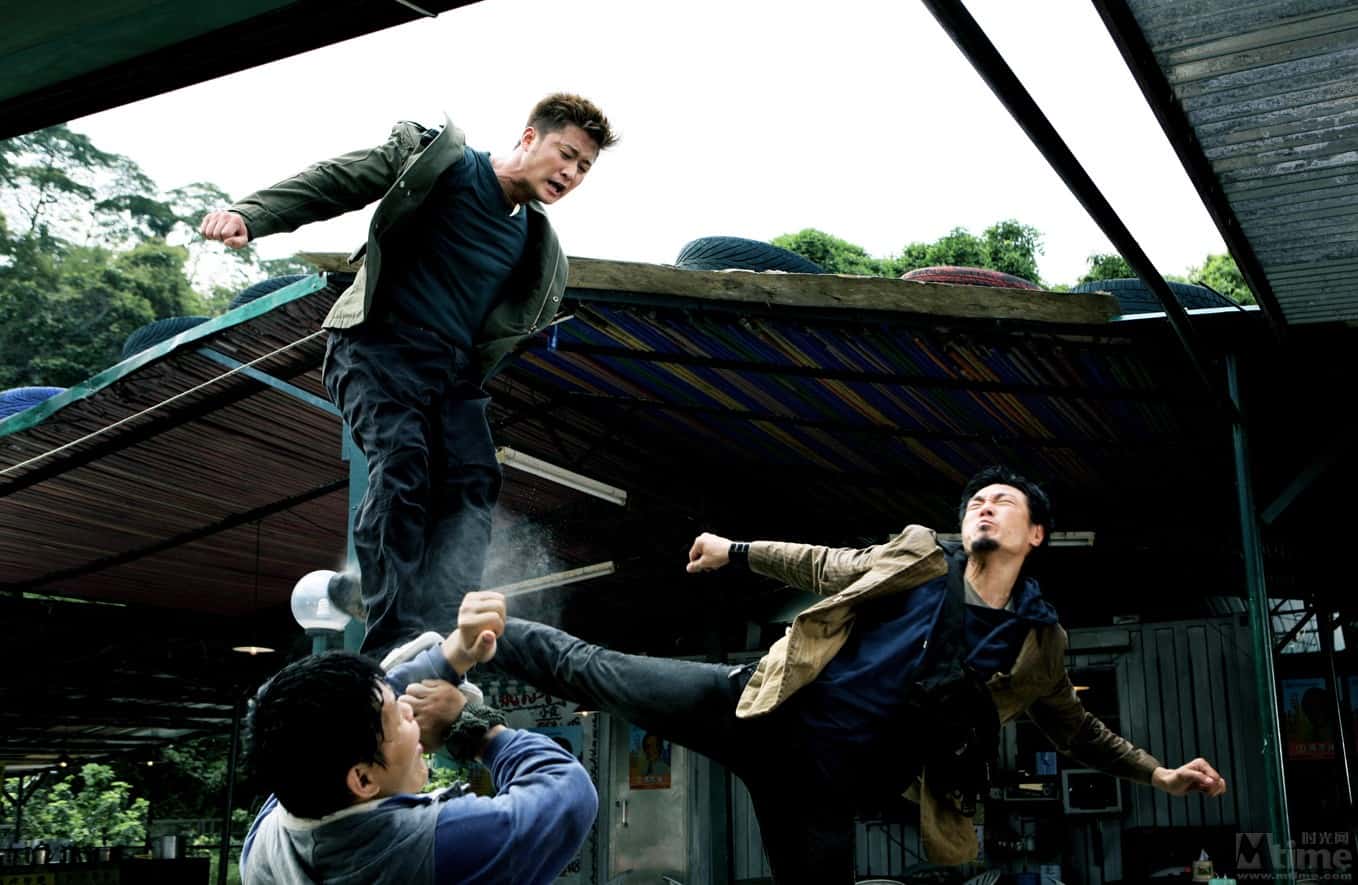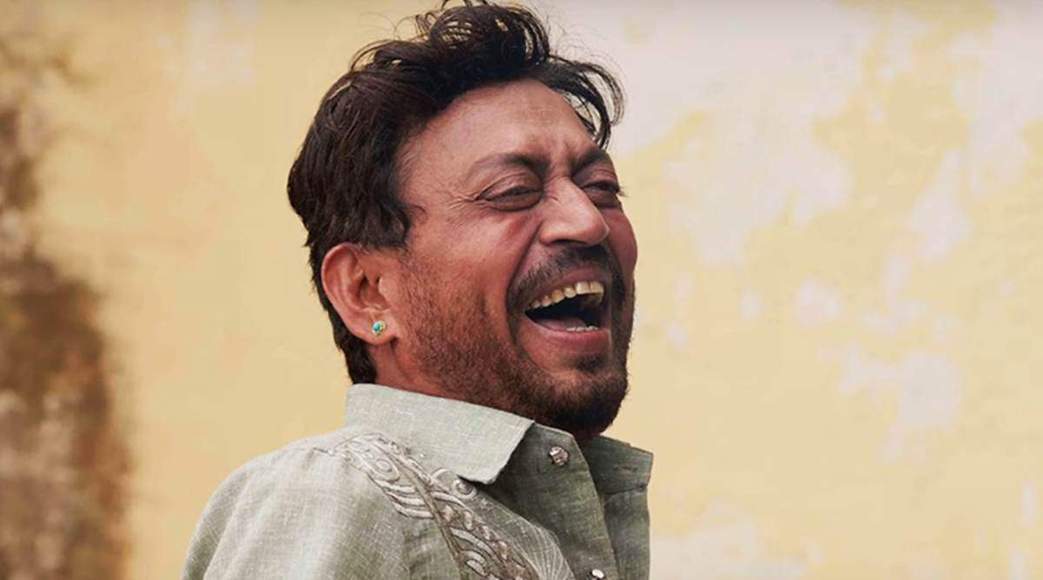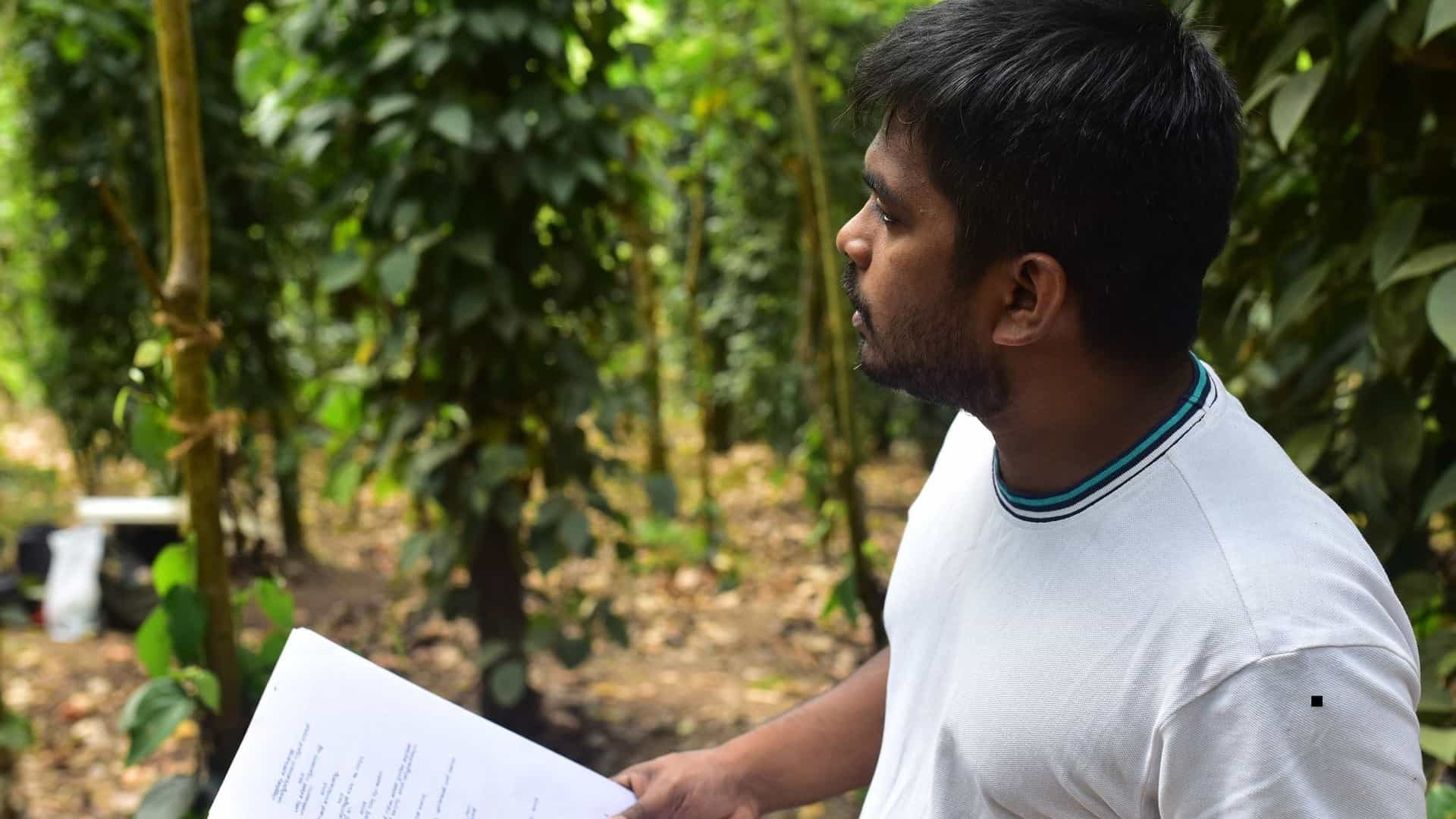Inugami
In Masato Harada's ‘Inugami' we are ‘teleported' half a century later, in the forests of Mount Omine where his story unfolds, based on a novel by Masako Bando.
In the opening sequence, we meet one of the two main characters. At first we meet Miki Bonomiya, a name which sort of reminds the last name of Tamayo Nonomiya, Sahei's protégée in Ichikawa's ‘Inugamis'. She's a traditional in-house maker of paper used for calligraphy. She cooperates with a wealthy family near Omine, the Dois, who own a big paper factory. She hands over her handmade calligraphic papers to them and they both make profit as the Dois push it in the big market along with their own products. Seiji, a young local from the Doi family and apparent heir of the Doi paper fabric is responsible for trading with Miki. At first glance and as we observe Miki's character, we see an obviously good looking woman who has somehow abandoned herself. She's a loner and a hard worker, living with her estranged family who has quite a name in the area. Her hair are gray-ish, though she doesn't look old enough. At the same time, we meet our second main character, Akira Nutahara, a newcomer in the area who arrives there to teach in a school in Ikeno area, which is right next to Omine. As he runs out of gas, he accidentally meets Seiji. They have small talk regarding who's who and Seiji gives him some information about the location. Seiji, who's a kind figure throughout his presence in the film, helps Akira by giving him a ride. He tells him he's got to make a stop at Miki's place first. As they walk through a forest to reach Miki's isolated paper lab, Akira passes out. As a result, he's found unconscious in Miki's working place and that's how the two main characters get in touch.

In the meantime, we have already met the third-key character, Takanao. He's Miki's brother and he's not a particularly easygoing character. In fact, he's an oppressive patriarch in disguise, who uses everything and everyone to do whatever he wants. Practically, he kinda sweeps under the rug his personal failures and his weaknesses which have an impact on the rest of the family. He also treats women in a despicably chauvinistic manner, as he has these misogynistic outbursts where he drives his wife on the edge of her temper. This is only the tip of his hideous behavior as he keeps his family captive through a way of life that doesn't keep up with the era they actually live in. It seems like he keeps them hidden in the ‘dark'. They don't use electricity, TV's or phones, but as we learn, they are allowed to use a computer. Probably because Takanao had a wine trade which he set up through the internet, which, expectantly, fell apart like everything and everyone else in his life.
These 3 characters have something very important in common. It's through their secret that Harada's mixes a bit of Oedipus Rex mythology with the inugami curse. Both these traits run within the Bonomiya circle for a long time and as it seems, they make their presence ‘visible' once again.
Oedipus Rex
In case you're not aware what Oedipus Rex is about allow me to make a brief introduction. We're talking about a Greek ancient tragedy written by the great Sophocles. Oedipus is abandoned by his father, Laios the king of Thebes. Oedipus is found and raised by Polybus, the king of Corinth, an area in the northern part of Peloponnese. Oedipus receives a prophecy where he's destined to kill his father and marry his mother, in order to become a king. Thinking that he might kill Polybus, his stepfather, he leaves Corinth and as he wanders he accidentally kills Laios, his biological father. He steps in Thebes, which has become an abandoned kingdom. Thebes is left at the mercy of the Sphinx, a mythological monster. He solves the riddle of Sphinx as required and becomes the King of Thebes. He's marrying the king's widow, Jocasta, who's also his biological mother. Years later when Jocasta learns she's married to her son and as it appears, her husband's killer as well, she commits suicide by hanging herself. When Oedipus realizes what he's really done he blinds himself by sticking two of Jocasta's pins into his eyes. Freud borrowed Oedipus act of incest to come up his theory about the Oedipus complex.
Harada's using the Oedipus complex and mixes it with Japanese tradition and folkloric horror in order to create a multidimensional story. I can't say he succeeds fully, as it seems that he wants to say a lot of things in almost less than two hours. The film is very well made, though. I also got the impression that people were expecting a J-horror kind of film, but this is not actually the case. The mystery and the creepiness is present in a scale. But this is mainly a tragedy and as the story proceeds, it becomes clear that we are involved into a psychological drama with supernatural character. This is the reason why I don't want to spend a lot of words regarding the plot unfolding. The very final scene is kind of opposing to the original Oedipus Rex tragic ending. It seems more cathartic than just driving us to a tragic conclusion. There is a possibility that this is happening in order to ease all these crushingly dramatic interactions we watch taking place before our eyes a bit. Probably Harada wants a more ‘romantic' ending as he wants us to finally feel for these two souls, no matter what we may think about their interaction. I have also the sense that Harada leaves it a bit ‘open' for us to wander, just like the two main characters do.

Again we receive a lot of information. Of course not as much as we do in Ichikawa's film. The editing seems hasty, austere and I don't know if this is Harada's intention, in order to give it a bit of boost regarding the Western audiences. Note that the film was introduced in Berlin Film Festival. I believe it would be much better if the film would be half an hour longer. This should allow Harada to develop a few characters a bit better. Nevertheless, Harada is a great cinematographer. He manages to bring harmony and a sense of spirituality with his camerawork, through open spaces and beautiful colors. The overtones are gloomy but they are nicely infused with the vivid landscape. He achieves this by taking us for a walk through the beautiful Omine forests or by focusing towards the clear sky. His naturalistic way of shooting is effectively poetic and moody at the same time. So are his skills as an auteur in general. I believe his ‘Kamikaze Taxi' is one of the best films shot in the 90's. His ‘Bounce Ko Gals' is also an amazing masterpiece, among many other of his titles. If you haven't watched those excellent, truly modern masterpieces of contemporary Japanese filmmaking you definitely need to, as soon as possible.
The final sequence where the Bonimiya clan is heading for a ritual (except the fact it isn't exactly such an innocent one but I won't reveal anything) in order to ‘cleanse' the family's name in 9 centuries is beautifully shot. Furthermore, we take a look inside the community members, who look upon these women as some kind of witches. This is quite a revealing point of view regarding the modern Japanese province. Harada shoots this certain sequence in black and white removing any hint of color, only to bring it back after the conclusion of this ‘ritual'. This kind of ritual ends up in something totally different, inhuman. In a way he indicates that through this ritual certain modern human values, even life itself, are cancelled by ‘superstitions'. They are presented in such way in order to distort the nobility of the term ‘tradition'. It's the human spirit and the perception of what's right or wrong that pushes people towards these paths. When such perceptions exist there will always be someone present to take advantage of them.
I truly loved Yuki Amami's performance as Miki. She's everything that needs to be as the troubled woman, whohas physically transformed as she falls in love with the young man. She knows she probably does the wrong thing, she's been there again in the past, practically stigmatizing her life, but she learns how to live with this mark on her ‘skin'. At the same time, she wants to escape, to transform into something new, unknown to her. She sees visions of her mother who explains what's happening to her regarding the inugami myth, but we don't know what's real or not. She becomes serene, sensual, angry, decisive, even afraid when she exactly needs to be. She delivers her character perfectly, so the viewer is able to feel through her. She managed to make me care about this woman who's found in the eye of the storm, once again in her life. It's quite obvious that Mrs. Amami is a skilled actress as she was also a member of the Takarazuka Revue, a theatrical collective and school which consists strictly of women who perform all parts, male either female, in theatrical plays. The male performances are also meticulously delivered as well, but the female leading role shines, practically stealing the show.

Conclusion
On the whole, I think that these two films prove how versatile Japanese cinema is. You can be versatile if you are clever enough to take hints from your close environment to create something on your own. Of course the birth of a concept is not something which falls from the sky, the creator is destined to go back to the main sources, constantly . But think this is the real power behind Japanese filmmakers and their creativity, despite their time of being. Symbolism (among many others) as a cultural trait is definitely one of Japan's main creative weapons. This is excluded from the medium it is applied, a film or a building, a painting or a camera angle. As a man living in Greece, a nation where symbolism used to be an artistic basis, I can easily relate in such a way of storytelling. I can perceive what is caused through this transaction, for at least most of the times I get to have such an experience. Mythology, superstitions, the closed family circle and hidden secrets, patriarchs and the connection with an ancient spirit, practically unknown (what we know about our true historic past is nothing compared to what we really don't) past. Ichikawa and Harada are undoubtedly versatile filmmakers, it's clear through their filmography. They are clever and capable enough to draw a myth from the past. Each one of them manages to adjust this folkloric trait according to his needs. It seems easy work from the audience's point of view, but it isn't, as the trap of ending up in endless clichés is there.
In this case, we get two absolutely different films but with a few and very minor common characteristics. In the end, they both show two oppressive circles of patriarchy and the victims, younger people guided by other victims, mothers and siblings. This is also a form of tragedy. A tragedy just like the one Sophocles gave us almost two thousand and a half years ago.













